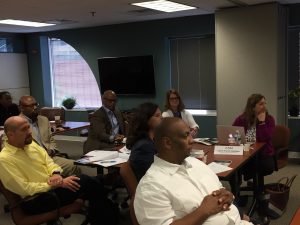We spent a lot of our time together last Saturday at the workshop I presented for AASA’s Aspiring Superintendents Academy (“Hit the Ground Running With Your New Board”) talking about the very special nature of the chief executive officer position in all public and nonprofit organizations, including school districts. Taking the helm in a school district, you become part of a new profession – CEOship – with a set of very different leadership priorities: governance (the work of your school board); leading strategic change (a survive-and-thrive function in our rapidly changing world); and external/stakeholder relations (critical for any institution heavily dependent on taxpayer support). One of the real challenges facing new superintendents (CEOs) is that they’re very likely not to have acquired the nuts and bolts knowledge and skills they need to thrive as a CEO – either in graduate school or while climbing the professional ladder in their districts. This is certainly true of the governance function. When I polled the superintendent-aspirants in my workshop last Saturday, not one participant reported having taken a graduate course focusing on the board-superintendent relationship – not at all unusual in my experience, which is amazing when you consider how much power boards wield, including hiring – and firing – the superintendent. And, ironically, as we discussed last Saturday, many of the very qualities that will help you make it to the top spot in your district (e.g., meticulous attention to technical detail) are not only now relatively unimportant, they might even limit your CEO effectiveness. Without question, AASA’s Aspiring Superintendent’s Academy is meeting a truly critical need!
I’m not sure how AASA selects participants in the Aspiring Superintendent Academy, but based on my experience last Saturday, it must be a really well designed process. As I shared with the AASA’s Program Lead, Helen Morris, and Lead Teacher, David Schuler, I can’t recall ever working with a more enthusiastic, fully engaged, and open-minded group of senior professionals. I knew I was in for a great time early in the workshop when we did an exercise that many other groups I’ve worked with over the years have found quite challenging: putting together a set of questions that a board might ask candidates for the CEO (superintendent) position to determine their “board savviness.” Possible questions poured out: “What are the characteristics of an effective board-superintendent partnership?” “What steps would you take to build a great partnership with our board?” “How would you get our board engaged in the strategic and operational planning processes?” “What are the elements of an effective process our board might follow in evaluating your performance?” These are just a few of the ideas participants came up with – and were still coming up with when we had to move on to other topics.
I’m accustomed to feeling pretty drained after stranding for almost a half-day presenting a workshop, but in the taxi to the airport Saturday afternoon, I felt so energized that I would happily have spent the rest of the day with this incredibly stimulating group of top professionals. If they’re characteristic of aspiring superintendents around the country, we can take heart about the future of K-12 education, knowing that the critical chief executive function will be in good hands.






